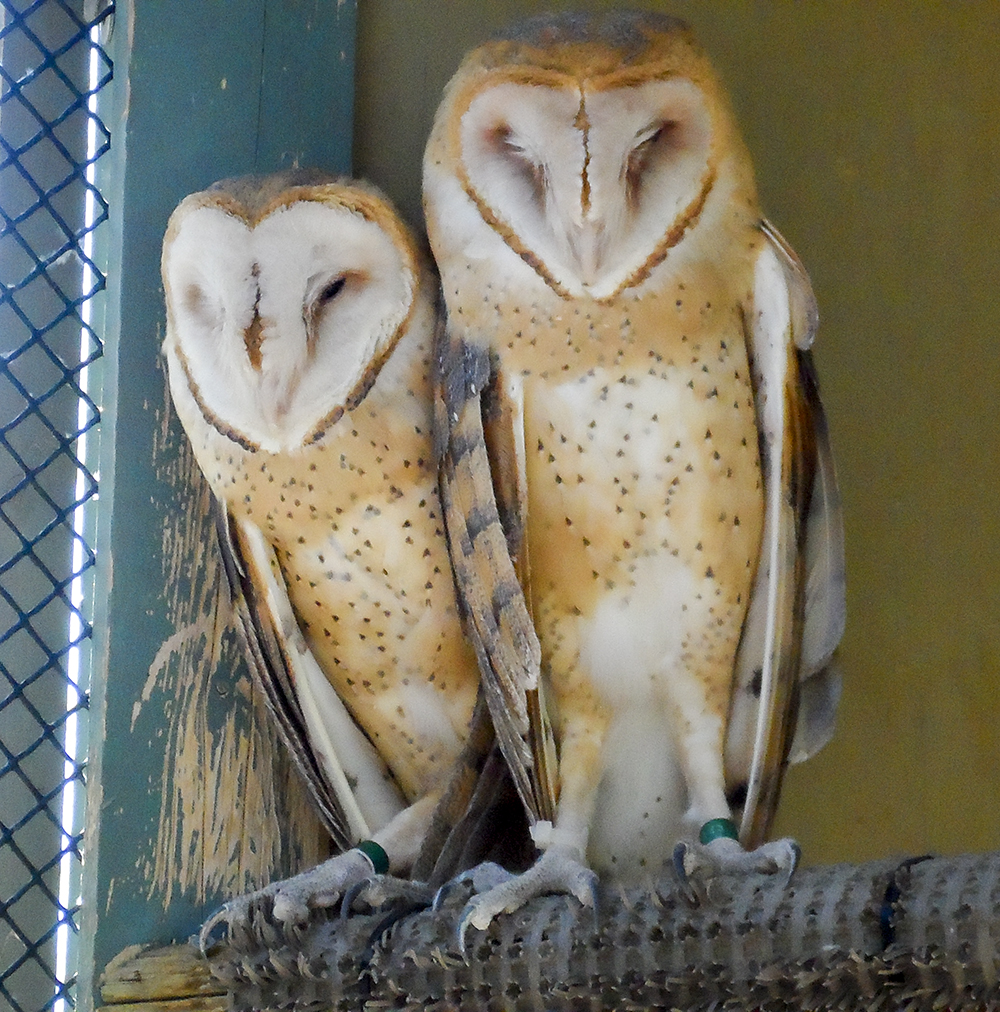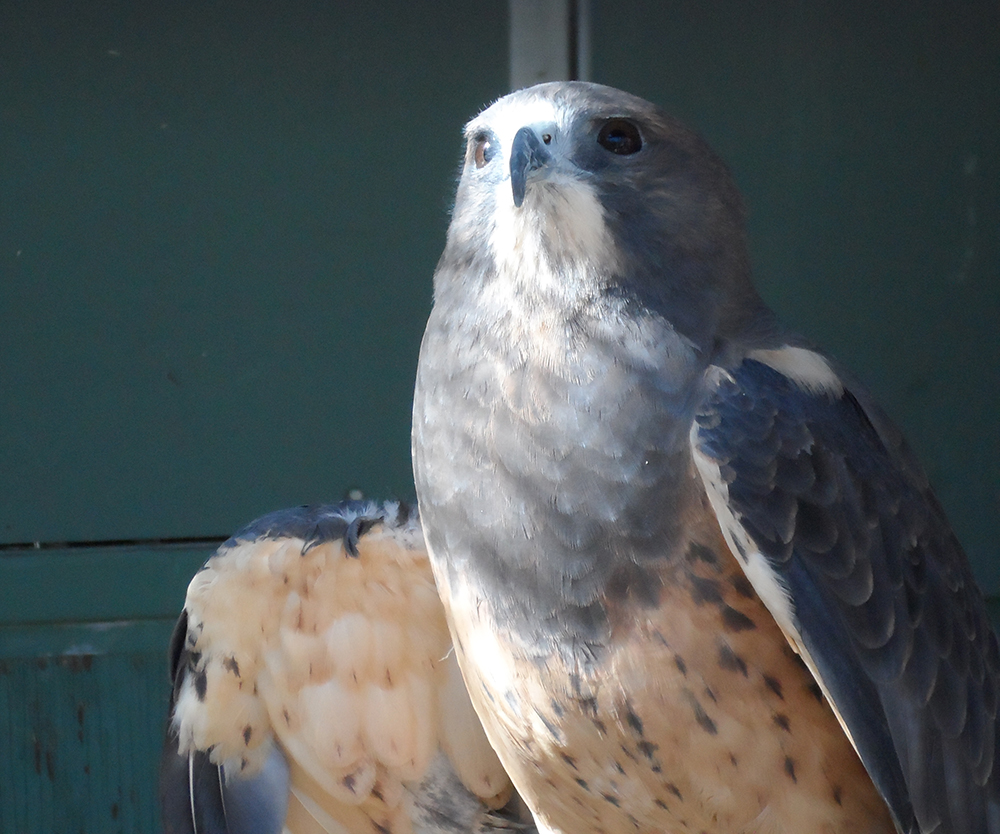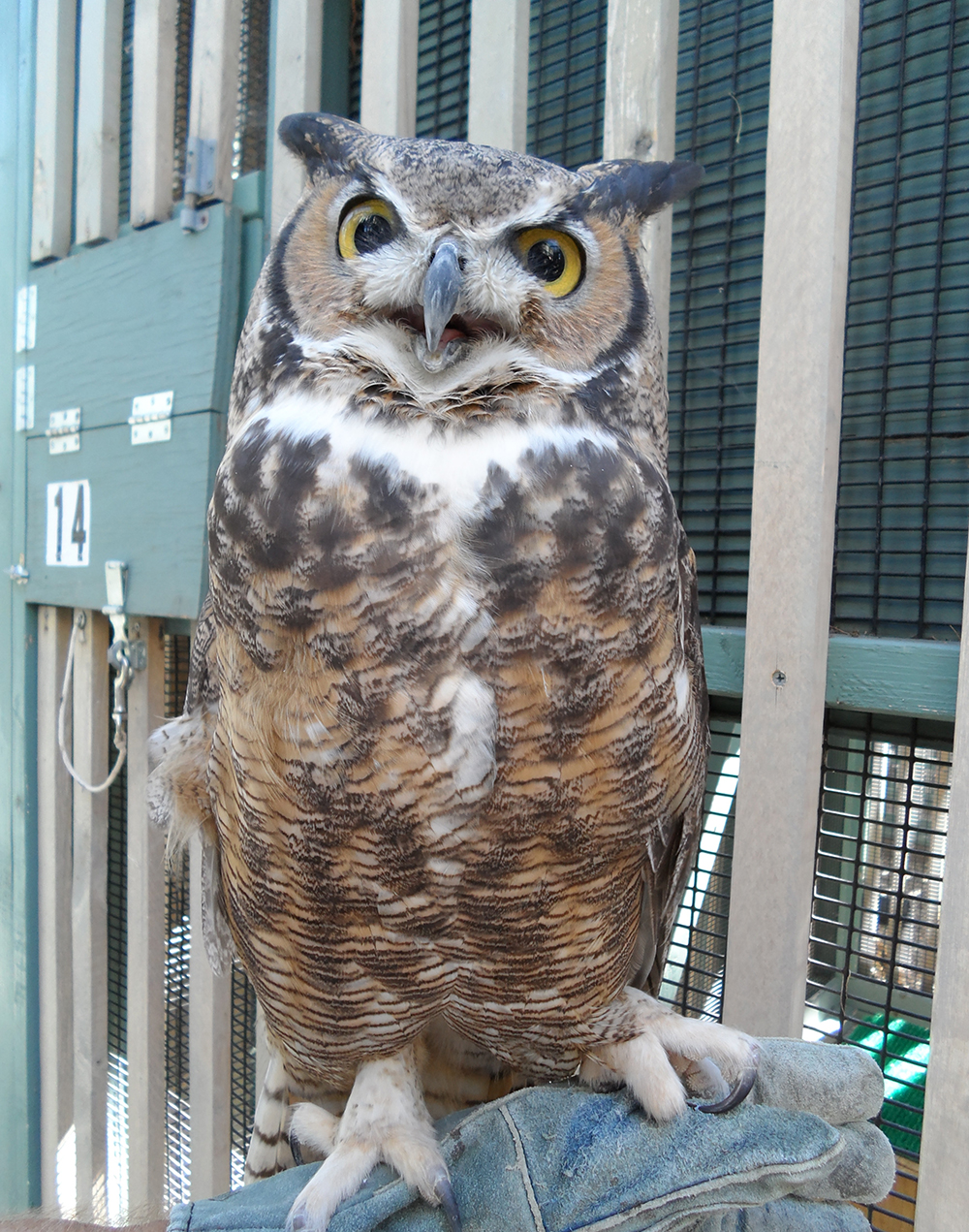By Steffanie Jensen
 As I drive along a dusty trail expecting to find a bird sanctuary, it occurs to me that I am approaching what appears to be someone’s house. I park and follow the signs instructing me to enter around the side. As I ring the bell, I can see into the backyard where large, roofed enclosures with connecting walkways house a variety of owls, hawks, eagles and other rescued raptors.
As I drive along a dusty trail expecting to find a bird sanctuary, it occurs to me that I am approaching what appears to be someone’s house. I park and follow the signs instructing me to enter around the side. As I ring the bell, I can see into the backyard where large, roofed enclosures with connecting walkways house a variety of owls, hawks, eagles and other rescued raptors.
I have arrived at Wild at Heart, an all-volunteer run organization dedicated to the conservation and preservation of Arizona’s native wildlife. Owned by Sam and Bob Fox, the property in Cave Creek has already housed up to 400 birds of prey this past spring alone, with approximately 200 currently residing there. Inside the house where Sam and Bob live is a recovery room. Certain birds will spend the remainder of their lives there if they are unfit for release back into the wild. Others will heal and go through a process in which they are housed with foster parent birds that will train them to hunt and eat in preparation for release into the wild.
“Everything here is done by volunteers,” says Bob as he pets an injured owl, Mag, who is now a permanent resident in the facility. “In the spring the injuries stock up,” Bob tells me. “Spring is when the babies are born. Many fall from nests, starve to death, or their homes are overtaken by construction sites.” Bob explains that 65 to 95 percent of birds of prey die within the first year of being born into the wild.
How Wild at Heart Began
“We started out as volunteers at the Arizona Game and Fish Department,” Bob explains of himself and his wife, Sam, who helps run the facility. “They were only open until 5 p.m., and Sam and I realized animals don’t stop being injured or needing help at 5 p.m. It happens 24 hours a day.” Sam and Bob initially adopted one owl into their at-home care, and it just grew from there. “We’ve had calls from all over the world,” Sam tells me. “California, Georgia, Germany and even Indonesia have called. The difference here is that a live person, usually me, will pick up the phone 24 hours a day. You can’t really find that anywhere else. This way we make sure people get help when they need it, even if it means answering the phone at 3 a.m.” Sam and Bob are really making a difference.

In addition to rescuing and rehabilitating raptors, they’ve continually expanded their efforts to help Arizona’s wildlife including assisting with endangered species recovery programs, relocating burrowing owls. They have even begun working with some construction organizations to help preserve natural habitats. Wild at Heart also has plans to build nest boxes and place them into the wild to ease the transition for released birds.
Running the Wild at Heart treatment center didn’t happen overnight. “It’s something that, if you do it, you have to be fully committed to it,” says Bob. Helping birds be ready for release is one of the biggest benefits of the facility. Young birds are placed with adults of the same species in larger outdoor cages, making the transition easier for them. “When they interact with humans all day instead of learning from birds of their own species, they get distracted,” Bob tells me as we pass through some of the cages. “Timing for release is very important. We’ll wait until it cools off outside and [the birds] are old enough. There’s a lot of thought that goes into the release.” Bob explains that Sam will spend weeks looking up areas of Arizona that would be appropriate for each species before release.
Emily Powell, a volunteer at Wild at Heart since 2010, tells me, “The birds are the mission here. I just latched onto that. We’re just trying to keep the facility well maintained. It is all about the quality of life for the birds.” As Emily continues spraying down the cage mats, I notice a young Boy Scout building a birdcage. “We use a lot of youth organizations and adult volunteers—there is no age limit. If someone wants to help, we don’t turn them away,” Bob explains to me as we tour several cages around the backyard of the property, many of which were built by Boy Scout troops. One even shows a plaque of the troop name and the year it was completed. The center also runs purely on donations, which are always accepted. “We love to partner with other organizations when possible, so everyone benefits,” Bob says.
 Pictured here is just one of many birds of prey housed at the Wild at Heart facility. Her name is Scheherazade, after the princess in the tale of 1,001 Arabian Nights. She has lived at the facility for 18 years and is a permanent resident due to a gunshot wound that took out the majority of her right wing. Bob pets Scheherazade and tells me, “The needs of the animals must be met first. After 25 years, we don’t want to lose focus of that.”
Pictured here is just one of many birds of prey housed at the Wild at Heart facility. Her name is Scheherazade, after the princess in the tale of 1,001 Arabian Nights. She has lived at the facility for 18 years and is a permanent resident due to a gunshot wound that took out the majority of her right wing. Bob pets Scheherazade and tells me, “The needs of the animals must be met first. After 25 years, we don’t want to lose focus of that.”
To get more information, volunteer, donate, or ask questions:
Wild At Heart, 31840 N. 45th St., Cave Creek
480-595-5047 | wildatheartowls.org
Bob and Sam Fox are available 24 hours a day by phone.
Photos by Steffanie Jensen






